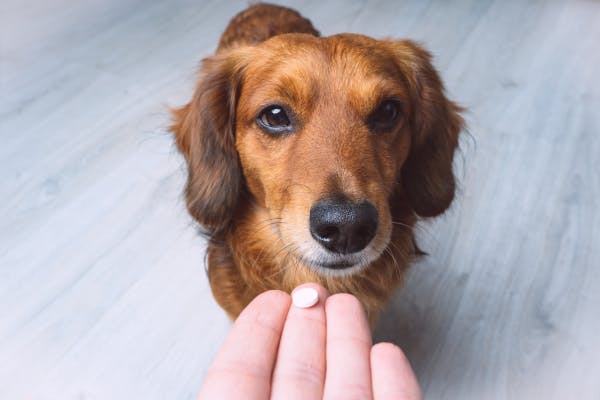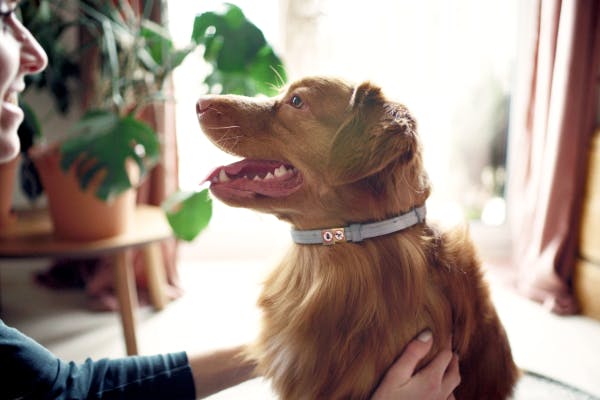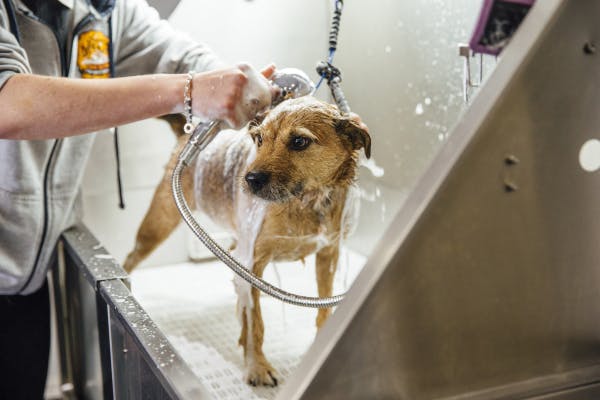learn about dental dog treats
How to Monitor Your Dog's Oral Health and Recognize Signs of Dental Issues
Monitoring your dog's oral health involves regular tooth brushing, professional cleanings, and providing dental chews and toys. Recognizing signs of dental issues such as bad breath, bleeding gums, and changes in eating habits can help ensure your dog's overall well-being.

Maintaining your dog's oral health is essential for their overall well-being. By incorporating professional cleanings, regular tooth brushing, and appropriate dental treats into their routine, you can help ensure your furry friend has healthy teeth and gums. It's important to recognize common signs of dental issues in dogs, as they could indicate underlying problems that require a veterinarian's attention.
- The Importance of Monitoring Your Dog's Oral Health
- Common Signs of Dental Issues in Dogs
- At-Home Dental Care: Brushing Your Dog's Teeth
- When to Seek a Veterinary Dentist for Your Dog
- Professional Dental Check-ups and Cleanings for Dogs
- Periodontal Disease in Dogs: Causes and Risks
- Addressing Bad Breath in Dogs: Causes and Solutions
The Importance of Monitoring Your Dog's Oral Health
Dogs, like humans, can suffer from gum disease, which should not be ignored. Dental problems in dogs can lead to loss of appetite, broken or lost teeth, and even damage to other organs if bacteria enter the bloodstream through unhealthy gums. To maintain good oral health, it is important to have professional cleanings and brush a dog's teeth regularly. Dog dental treats and special diets can also help but should be used with caution.
Active chewing can help reduce plaque build-up in dogs. Some dog dental treats and diets can decrease plaque by almost 70%. Chewing plays a significant role in keeping a dog's mouth healthy. In one study, making kibble 50% larger led to a 42% reduction in tartar. Coating the products with polyphosphate further reduced tartar by 55%.
The Veterinary Oral Health Council (VOHC) checks pet products to see if they meet standards for reducing plaque or tartar. Approved items must reduce plaque or tartar by at least 10% to get the VOHC seal of approval. If a chemical anti-plaque agent is used, it must reduce plaque or tartar by at least 20%.
Bad breath in dogs is often caused by bacteria build-up in the mouth, which may indicate that the dog needs better dental care. Along with professional cleaning and regular tooth brushing, some dog treats are designed to help improve breath. Hard chew toys can also aid in maintaining oral hygiene.
Common Signs of Dental Issues in Dogs
Taking care of a dog's oral health is vital for their overall well-being. By including professional cleanings, regular tooth brushing, and suitable dental treats in their routine, pet owners can help ensure their dogs have healthy teeth and gums. It is important to recognize common signs of dental issues in dogs as they could point to underlying problems that need a veterinarian's attention.
Not eating or changes in eating habits: If a dog suddenly refuses to eat or seems disinterested, this could be a sign of a dental problem.
Bad breath: If a dog suddenly has bad breath, it could suggest an infection from an abscessed tooth or gum infection. Bacteria in the mouth cause bad breath, so it is important to see a veterinarian if this symptom continues.
Bleeding gums: Bloodstains on chew toys or around the feeding area could mean that the dog has a gum infection or periodontal disease.
Swollen and red gums: If a dog's gums become dark red and swollen, they might have an infection leading to gingivitis or periodontitis.
Excessive drooling: Constant drooling mainly indicates pain; consult with a veterinarian for examination if your dog drools too much.
Unusual behavior: When dogs start doing things never seen before, it is essential to find out if they might be experiencing dental pain.
Depression or lack of energy: Dogs may isolate themselves when in pain and show disinterest in their favorite play activities.
Discolored teeth: Excess tartar can cause teeth to turn yellow or light brown which can lead to more serious dental problems later on.
best dental dog treats
- our rating98 out of 100
- our rating97 out of 100
- our rating96 out of 100
At-Home Dental Care: Brushing Your Dog's Teeth
Establishing a dental care routine at home is essential for preventing gum disease and maintaining a dog's overall health. One of the best ways to keep a dog's teeth clean is by brushing them regularly with a dog-specific toothbrush and pet-safe toothpaste, as human toothpaste can be harmful.
Before beginning, let your dog become familiar with the toothbrush and toothpaste. When they are ready, gently lift their lips and brush their front teeth in circles before gradually moving towards the back teeth. If your dog is initially resistant, try brushing for shorter periods and gradually increase the duration.
The frequency of tooth brushing depends on your dog's needs; most experts recommend daily or weekly sessions. You can also give your dog special chews, toys, and treats that help clean their teeth and freshen their breath.
When brushing your dog's teeth: be gentle; offer praise to create a positive experience; focus on the large cheek teeth and pointy canine teeth where most plaque and tartar accumulate; and take time to acclimate your dog to having all of their teeth brushed over several days or weeks.
Spend about 30 seconds on each side when brushing your pet's teeth. Remember to clean the toothbrush thoroughly after each use, replace it every three months if possible, and use separate brushes for multiple pets.
Ensure your dog receives regular dental check-ups from a veterinarian. This helps detect problems early and maintains overall oral health. By investing time in dental care at home and through professional check-ups, owners can ensure their pets have healthy gums throughout their lives.
When to Seek a Veterinary Dentist for Your Dog
It is crucial to seek a veterinary dentist when your dog faces dental problems that regular vets cannot handle effectively. While general veterinarians perform basic dental care like annual checkups, cleanings, and tooth extractions, more complex dental issues may require the expertise of a veterinary dentist.
Veterinary dentists have extensive education, testing, training, and residency experience to become Board Certified Veterinary Dentists. This additional training allows them to perform complicated dental procedures such as advanced extractions, oral tumor removals, root canal therapy for broken teeth, dental restoration with metal or zirconium crowns, and orthodontic treatments.
Signs that your dog may need to see a dental specialist include discolored or broken teeth; persistent bad breath; reduced appetite; drooling blood; or difficulty chewing. If you notice these symptoms in your pet, consult with your primary veterinarian first. Many dental specialists require referrals from general veterinarians. Your primary vet can either treat the issue themselves or refer you to a specialist if needed.
When searching for a veterinary dentist, verify their background and experience by checking American Veterinary Dental College (AVDC) directory listings and asking for recommendations from friends, family members, or your primary veterinarian. Also, read online reviews and testimonials to assess the quality of service offered by potential veterinary dentists.
In addition to regular checkups and cleanings at the vet's office, seeking specialized care from a veterinary dentist can help maintain optimal oral health in dogs, which contributes significantly to their overall well-being.
Professional Dental Check-ups and Cleanings for Dogs
Dental check-ups and cleanings are important for maintaining a dog's oral health. During these visits, the veterinarian examines the dog's teeth, gums, and mouth for any issues. X-rays might be taken to detect problems not visible to the naked eye. The dog is sedated during this exam to prevent pain or fear.
The frequency of dental check-ups depends on the dog's age, breed, size, and lifestyle. Older dogs may require more dental care than younger ones due to age-related tooth deterioration. Small dogs might need dental care earlier in life because of crowded mouths. Dogs with short faces and noses can have more dental problems due to tooth growth patterns. Large dogs might not have as many dental issues but could break their teeth if they chew too hard. The veterinarian will help determine when and how often a dog should receive dental care.
A dog's lifestyle also affects the frequency of dental care needed. Regular tooth brushing and a diet of dry food or special dental food may reduce the need for professional cleanings. However, if a dog doesn't chew much or eats mostly soft food, they might require more frequent cleanings.
During a professional cleaning, the veterinarian removes plaque and tartar from the teeth above and below the gums before polishing them to make it harder for plaque to accumulate again. The dog is sedated during this cleaning to prevent pain or fear.
Sedation is important for two reasons: it allows the veterinarian to perform a thorough job without causing pain or fear in the dog, and it helps ensure clear x-rays and proper cleaning.
To maintain good oral hygiene between check-ups and cleanings at home: brush your pet's teeth with special pet toothpaste; provide dental chews; feed them special food; and offer toys that help clean their teeth. However, these measures should not replace yearly dental cleanings by a veterinarian.
Periodontal Disease in Dogs: Causes and Risks
Dogs often have dental problems, such as periodontal disease that affects not only their teeth and gums but also their overall health. The disease is caused by plaque and tartar buildup on the teeth resulting in inflammation and damage to the structures supporting them.
Factors contributing to periodontal disease include poor dental hygiene, genetics, uneven bites, and small dogs with short snouts are more susceptible due to trapped food turning into plaque/tartar as well as less bone support for each tooth which increases chances of tooth loss from periodontitis
To prevent periodontal disease, it's important to brush dogs' teeth regularly, get professional cleanings, and provide them with dental chews and chew toys that help reduce tartar buildup. However, these should not replace daily tooth brushing.
Untreated periodontal disease can cause serious problems like organ damage and heart disease. Bacteria from the mouth can enter the bloodstream resulting in inflammation around the heart. Watch for signs of periodontal disease in dogs and seek veterinary help if needed. Early treatment can prevent more severe health issues and keep dogs healthy overall.
Addressing Bad Breath in Dogs: Causes and Solutions
Bad breath is common in dogs and can be caused by various factors. Understanding the causes and finding solutions can improve life for both dogs and their owners.
One reason for bad breath in dogs is unclean teeth. Like humans, dogs can develop plaque, tartar, gum disease, and other dental problems. To improve a dog's breath, owners should brush their dog's teeth regularly using special toothpaste and toothbrushes designed for dogs. Regular dental checkups at the vet are also important to maintain oral health.
Dog food can sometimes cause bad breath if a dog has digestive issues or an imbalance of bacteria in the stomach. It may be necessary to change their diet or give them probiotics to help with digestion. However, always consult a vet before making significant changes or providing supplements.
In some cases, bad breath may indicate more serious health issues such as diabetes, kidney disease, or liver disease. If a dog's breath smells unusual or does not improve after trying various solutions, consult a veterinarian to check for any underlying health problems.
Dogs may also develop bad breath from eating inappropriate items like garbage or feces. In these situations, ensure your dog cannot access these substances and monitor them closely.
To maintain fresh breath and prevent dental issues in dogs, consider providing dental chews and toys designed for cleaning teeth while being enjoyable for the pet.
Addressing bad breath in dogs involves understanding its causes and implementing appropriate solutions such as ensuring clean teeth through regular brushing; monitoring diet; consulting with veterinarians regarding ongoing concerns; providing access to dental chews; and using toys that promote good oral hygiene.








